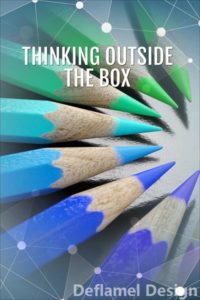Thinking outside the box
- April 24, 2020

A very valuable new aspect to modern graphic design, and one which enhances the experience for the graphic designer, is that of object detection. Using this capability, designers can pick out objects which might not be known to them all right and through the use of various software packages can identify and categorize what the items are. This makes life a lot easier when it comes to design projects.
One of the most important parts of any graphic design project is object detection, as it introduces efficiencies that were not there before and leads to a more informative process and it helps us understand and analyze scenes in a video or an image. It allows graphic designers to understand where an object is at any given time, thereby saving time in a project and in the process it allows for less human error.
Object detection is a very useful aspect to bring into a design project when it comes to the editing process at the end of the day. If a client, or designer for that matter, feels that there is too much in the project, then objects can be edited out by finding out where they are and where they need to be taken from. In this way, there will be just enough in the project and no more.
In such a way, the design team and the client can sit down together before the project starts and thrash out what they want in the project and what is superfluous, and they can use object detection to this end. This will lead to cost savings in the project for the client as only the necessary objects will be in place and will also bring about efficiencies in this way too. In finding out and knowing where objects are in the project, the whole area of object detection brings about a collaborative experience between the graphic designer and the client in question.
There are different programs that can be used for object detection by a design team and some social media providers have come up with some solutions. Among the different techniques for object detection, Facebook has come up with its model: Detectron2. This model, which is like Yolo models, has the capability to draw bounding boxes around any object and inference with a panoptic segmentation model, or to put differently, instead of the designer putting a box around the object in question, it “wraps” it bounding its actual borders (This is akin to it being like the smart snipping tool from photoshop.)
There can be times when a graphic designer can come up against a cul de sac. Computer vision is an area which apart from the obstacles that a person can encounter in coming to terms with it, it also has some barriers at the entry point: it can sometimes be difficult to get access to particular hardware, a model can take a while to give training to, and sometimes our laptops can freeze, therefore it is difficult to follow the trial and error path to learning that might be followed while testing out some machine learning algorithms.
Having the ability to find where an object is in both the environment around, and on a computer screen, is a very useful ability to have. It can lead to a mutual experience between the design team and the client in question and makes for an enhanced user experience, can lead to having sharpened images like never before in the project and adds clarity to what the client had in mind in the first place. Collaboration and cost savings pave the way for a happy design team and client, and a reliable end project.

